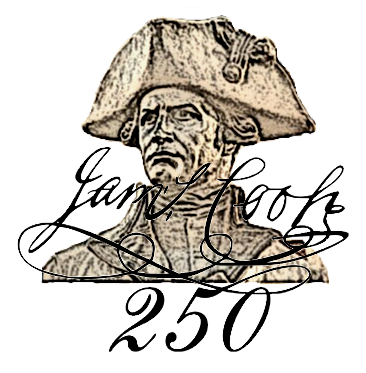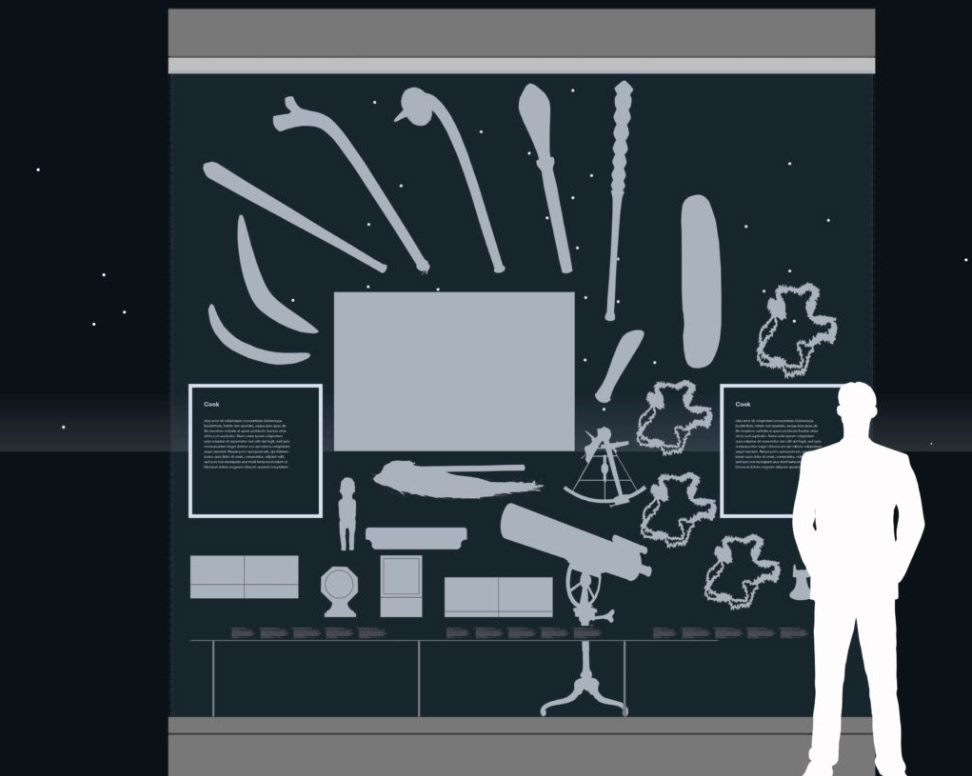by Jo Clarke, Marketing and Communications Officer, Plymouth Museums Galleries Archives
If you regularly follow our blog or attend our events you’ll know that this week, 26 August to be precise, marks 250 years since Captain James Cook set sail from Plymouth on board the Endeavour on a voyage of exploration (1768-1771). His mission was two-fold: to record the 1769 Transit of Venus from Tahiti, which would help calculate the distance of the earth from the sun, and to search for a mysterious southern landmass that everyone was so curious about.
The voyage was the first of three epic expeditions that would start from Plymouth. The second, which aimed to map the Antarctic continent, would take place from 1772-1775. The third, which attempted to discover a sea passage linking the North Atlantic with the North Pacific, would take place from 1776-1780, and would be the voyage during which Cook would meet his death.
Cook was originally from Yorkshire and his first voyage would take him to or past Madeira, Brazil, Argentina, Tahiti, Australia, New Zealand and Indonesia. We are not the only place that are marking this anniversary or considering its legacy.
If you’re keen to find out more, this commemorative James Cook 250 website gives an overview of Cook’s voyages as well as his earlier Naval career, which included the French and Indian War of 1758-62 and survey work in Newfoundland from 1763-7.
The museum in Cook’s native Whitby, Yorkshire has lots of information on its website.
In September, the National Maritime Museum, Greenwich will open new galleries focussing on exploration.
The Royal Academy will also have a major exhibition on display from 29 September to 10 December called ‘Oceania’, which will explore the historic and contemporary art of the Oceanic region.
I went to visit ‘James Cook: The Voyages’ at the British Library last week – a major exhibition which opened earlier this year. It’s only on display for a few more days but is well worth a visit if you’re in London over the bank holiday weekend. The British Library holds an extensive collection of original documents and artworks from Cook’s voyages and many of them are on display. The Guardian newspaper has described it as presenting visitors with ‘eye-opening records of worlds colliding’.
One of the things the British Library exhibition does well is strike a balance between highlighting the ambitious aims of Cook’s voyages and the way they helped shape Europe’s knowledge of the world, with the far-reaching consequences they had for the lands they touched.
Cook achieved much on each of his expeditions, mapping and documenting coasts and islands that, although inhabited for thousands of years, were largely unknown to Europeans. However, these seemingly innocent scientific journeys opened up possibilities for colonisation, the spread of disease, economic exploitation and the devastation of local wildlife populations. In places such as Australia and Canada, Cook is often a controversial figure – although quotes from his journals imply these are legacies that he would have been very uncomfortable about.
When The Box opens in 2020, Cook will be featured in our ‘100 Journeys’ gallery with a case display that largely draws from our world cultures collections. You can see a working diagram below. We are also considering how we mark the 250th anniversaries of his second and third voyages.
Sir Richard Attenborough describes Cook as ‘the great revealer of the Pacific’ and this is a very deserving title. This anniversary and the two that will follow are also a reminder of how complicated and multi-sided things can be when different cultures come into contact.
Posted in #MuseumOnTour, Blog, The Box, Plymouth by Jo Clarke on August 22nd, 2018

